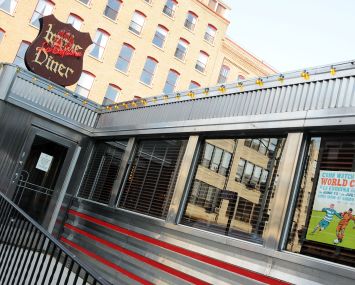5 Questions With Michael Brown of Skanska USA
By Jeff Ostrowski March 23, 2023 4:30 pm
reprints
Michael C. Brown is a busy man these days. He’s executive vice president and general manager for Florida building operations at Skanska USA, a contractor with 50 active jobs under construction across Florida.
Skanska’s biggest focus is health care, but it’s working on or recently completed a variety of projects. These include the $49 million Las Olas Beach Park project in Fort Lauderdale, the $36 million Frost Institute for Chemistry and Molecular Science at the University of Miami, and the $34 million Knight Center for Music Innovation also at UM.
Brown spoke to Commercial Observer about his business strategy.
This interview has been edited for length and clarity.
You did more than $1 billion in projects last year. To what do you attribute the level of activity?
Last year was just a fantastic year for us. We sold $1.3 billion of work. The majority of that was in health care. Generally speaking, the economy is still doing very well. I recognize that inflation is very, very high, but that’s not had a negative impact on demand yet. Even the Fed’s interest rate hikes haven’t had much impact yet on demand in our sectors. It really is a product of a very strong economy, a whole lot of demand, and a lot of folks moving to Florida. We focus on the larger not-for-profit organizations. So we work with Jackson Health in Miami, Broward Health, Orlando Health, Lee Health, Tampa General. You’re seeing Mayo Clinic, Cleveland Clinic and Johns Hopkins come to Florida. Some of the most prestigious international providers are coming to Florida. The for-profits are building in Florida, too.
Does that mean health care is recession-proof?
No. It may be somewhat recession-proof — people always need to go to the doctor. But there will come such a thing one day as being overbuilt. Florida eliminated the requirement to get a certificate of need a few years ago. As a result, there are more new beds coming on line over the next two years than I think Florida has ever seen. That significant increase in the number of beds will eventually end. Health care is recession-proof from the standpoint that there will always be demand. But the new bed building boom that we are seeing now will come to an end.
How are hospitals building today different from what patients are used to seeing?
If you look at the hospital room of 20 to 30 years ago and the hospital room of today, they’re pretty different. If you look at the operating rooms of 20 to 30 years ago and the operating rooms of today, they’re incredibly different. They are night-and-day different. Technology, robotics and all kinds of advanced science converge.
How is this building boom going to affect patients?
When I see the investments our clients are making, I think patients will have a lot of choice. That’s a good thing. There will be increased competition for patients. And where there’s increased competition, the level of service improves. Depending on which part of the state you’re in, there’s still more patients than beds. Lee Health in Lee County definitely needs to grow to serve their population well.
What’s your biggest challenge?
Costs. The biggest challenge facing our clients is that the cost of construction has gone up so much. We’re managing it well, but it’s certainly driving up expenses for our owners. Structural steel spiked last year, but it seems to be leveling off. In hospital construction, the complicated technologies are where we see the most escalation of all. Concrete and steel have gone up, but not as much as the high-tech materials that go into our buildings. While there are labor issues in our market, because we do projects of the size and scale we do, we do not have the labor issues that others are facing. We get a better quality of workers that makes a little more money.
Jeff Ostrowski can be reached at jostrowski@commercialobserver.com.


